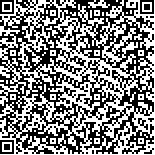| 本文已被:浏览 2455次 下载 2525次 |

码上扫一扫! |
|
|
| 养殖刺参早期发育阶段体内可培养细菌的菌群特征及其与环境菌群相关性分析 |
|
李靖1,2, 廖梅杰2,3, 李彬2,3, 王印庚2,3, 荣小军2,3, 张正2,3, 范瑞用4, 刘安然1,2
|
|
1.上海海洋大学水产与生命学院 上海 201306;2.农业农村部海洋渔业可持续发展重点实验室 中国水产科学研究院黄海水产研究所 青岛 266071;3.青岛海洋科学与技术试点国家实验室海洋渔业科学与食物产出过程功能实验室 青岛 266071;4.青岛瑞滋海珍品发展有限公司 青岛 266400
|
|
| 摘要: |
| 采用传统细菌培养方法,对养殖刺参(Apostichopus japonicus)早期发育各阶段幼体体内及环境(投入饵料及培育用水)菌群的组成与结构展开研究,对分离的优势细菌进行分子鉴定,在此基础上,进行了刺参幼体体内菌群结构与环境菌群结构相关性分析。幼体各发育期的细菌培养结果显示,在幼体开口前的各发育时期(性腺、卵、受精卵、原肠胚)均无可培养细菌,在投饵以后,耳状幼体、樽形幼体体内可分离到可培养细菌,幼体发育到稚参以后,消化道可培养细菌总数急剧增加,并在4月龄时达到108 CFU/g数量级。在幼体体内可培养细菌中,弧菌(Vibrio)占比为2.2%~77.3%。对环境菌群的细菌培养结果显示,培育用水中细菌含量变化不显著,随着幼体发育期饵料的转变,不同时期饵料中细菌含量差异显著。整个养殖系统中共分离到65株优势细菌,16S rDNA鉴定结果显示,所分离的65株优势菌鉴定为14个属43种细菌。相关性分析结果显示,随着幼体的发育,生物饵料中的细菌对消化道中的菌群结构影响越来越大。本研究结果为解析刺参消化道菌群的形成过程和演替规律以及养殖用益生菌的筛选与应用奠定了基础。 |
| 关键词: 刺参 早期发育 可培养细菌 菌群特征 |
| DOI:10.19663/j.issn2095-9869.20180406003 |
| 分类号: |
| 基金项目:中国水产科学研究院中央级公益性科研院所基本科研业务费(2017GH07; 2018GH10)、中国水产科学研究院黄海水产研究所基本科研业务费(20603022016008)和山东省农业良种工程重大课题(2017LZGC010)共同资助 |
|
| The Characteristics of Culturable Bacterial Microflora in the Gastrointestinal Tract of Cultured Sea Cucumber (Apostichopus japonicus) During the Early Developmental Stage and its Relationship with Environmental Flora |
|
LI Jing1,2, LIAO Meijie2,3, LI Bin2,3, WANG Yingeng2,3, RONG Xiaojun2,3, ZHANG Zheng2,3, FAN Ruiyong4, LIU Anran1,2
|
|
1.College of Fisheries and Life Science, Shanghai Ocean University, Shanghai 201306;2.Key Laboratory of Sustainable Development of Marine Fisheries, Ministry of Agriculture and Rural Affairs, Yellow Sea Fisheries Research Institute, Chinese Academy of Fishery Sciences, Qingdao 266071;3.Laboratory for Marine Fisheries Science and Food Production Processes, Pilot National Laboratory for Marine Science and Technology(Qingdao), Qingdao 266071;4.Qingdao Ruizi Seafood Development Co., Ltd, Qingdao 266400
|
| Abstract: |
| Conventional bacteriological culture techniques and molecular identification methods were used to reveal the composition and structure of the intestinal microflora in sea cucumber (Apostichopus japonicus) larvae at different developmental stages and the microflora in the aquaculture environment (feeds and aquaculture water), and then the correlations between these were analyzed. The results of bacterial culture from sea cucumber larvae showed that there were no culturable bacteria during the stages preceding the development of the mouth (gonads, eggs, zygotes, and gastrula), but culturable bacteria did occurr after larvae developed a mouth and began feeding. From the auricularia to doliolaria larval stages, the number of culturable bacteria in the gastrointestinal (GI) tract was low. After the larvae reached one month of age, the abundance of culturable bacteria in the GI tract increased significantly, and the highest level (108 CFU/g) was reached in four-month-old juveniles. The proportion of culturable bacteria that were made up of culturable Vibrio species ranged from 2.2% to 77.3% across the different developmental stages. The results of bacterial culture from the environment showed that there was no significant change in the bacterial content in the aquaculture water over time. However, as the ingredients in the feed used for different early developmental stages of sea cucumber changed, there were significant differences in the bacterial content in these feeds. Sixty-five dominant strains isolated from the aquaculture system were identified by sequencing their 16S rDNA. They were classified into 14 genera and 43 species. Correlation analyses revealed that over the course of the development of the sea cucumber larvae, the bacteria obtained from their feed likely had a great impact on the microbial flora in their GI tracts. This study laid the foundation for the analysis of the formation processes and succession patterns of GI tract microflora in sea cucumber, as well as for the screening and application of probiotics in aquaculture. |
| Key words: Apostichopus japonicus Early development Culturable bacteria Characteristics of microflora |